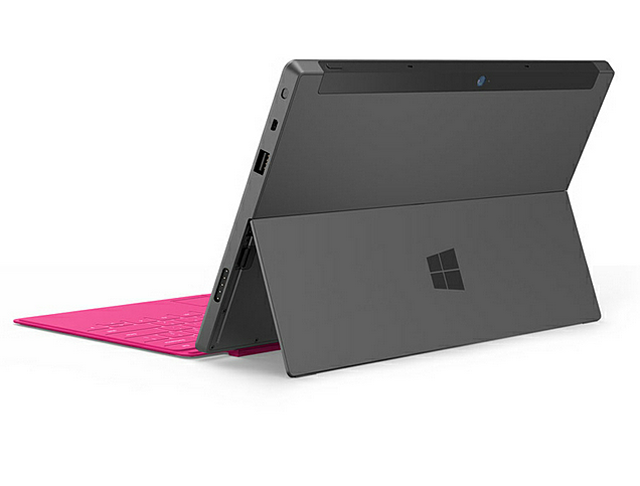Microsoft unveiled the original tablet
At a special event held today in Los Angeles, Microsoft, as expected, presented a tablet of its own production – Microsoft Surface.
The new device, which will be released in two versions – with Windows RT and Windows 8 Pro, was presented by Steve Ballmer, executive director of the Redmon company, and Steven Sinofsky, president of the Windows division.

Both devices are outwardly very close and both are equipped with a 10.6-inch ClearType HD touchscreen protected by Gorilla Glass 2, however, their resolutions, like the filling, are radically different from each other.
The Windows RT model on board weighs 676 grams with a thickness of 9.3 mm. It works on Tegra 3. It will be delivered in two versions with 32 GB and 64 GB. Both have microSD slots, USB 2.0 support, an HDMI connector, two cameras (front and rear). As for the screen resolution, everything is not quite clear here yet. Both Western and domestic sources give, to put it mildly, contradictory data. What is known for sure is that the screen will not be Full HD. So, most likely, we are talking about a resolution of 1280 by 720 pixels.
The Windows 8 model is much more interesting, but also more massive: 905 grams with a thickness of 13.5 mm. This version of the tablet is equipped with a Core i5 processor, and will be delivered with either 64 GB or 128 GB (!). It supports microSDXC format cards, as well as USB 3.0 and Mini DisplayPort connectors. As for the resolution, everything is more unambiguous here – 1920 by 1080 pixels.

Among the interesting features: a stand, folded, hidden in the case (or rather, being part of it), as well as a touch cover-a Touch Cover keyboard with a touchpad (!), which is attached to the device by a magnet. As an alternative to Touch Cover, Microsoft has also introduced a Type Cover mechanical keyboard.
The cost and release date of both devices is currently unknown.

Thoughts out loud: the presence of Microsoft Office Home & Student 2013 RT on both, as well as the first screenshots of the running office on these tablets gently hint that the new tablets are much closer to netbooks than to traditional tablets. In addition, it is confusing to support two different architectures and permissions at once, which suggests that Microsoft has abandoned the policy it pursued when promoting Windows 7 – a minimum of fragmentation.